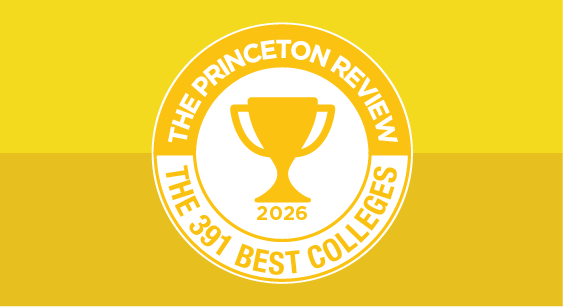
The SAT is going digital. The scoring scale remains from 400-1600, but much has changed. These changes have sparked a debate among students and parents about whether the digital SAT is harder than its previous iteration
Similarities between the Digital and Paper-and-Pencil SAT
It’s helpful to know what won’t change between the two tests. The scoring scale is still 400-1600 (which helps to answer the question of which test is harder – more on that below). The College Board states that both versions of the SAT test the same knowledge and skills. Accommodations are available on both tests, though the way accommodations are provided may differ based on the test format.
Differences Between the Digital and Paper-and-Pencil SAT
The most obvious difference between the two formats is the mode of delivery and interaction. In the digital SAT, test-takers read questions and answer them on a computer or tablet, using digital tools for navigation and responses. In contrast, the paper-pencil SAT involves reading printed test booklets and marking answers on paper answer sheets.
This change in format results in changes to the day-of-the-test experience:
- 1. You’ll need to bring a qualified device to the test center (or contact the College Board in advance to request a device).
- 2. Upon arrival, you’ll be assigned a seat.
- 3. You’ll then log in to the site’s Wi-Fi, enter the special code that the proctor will provide you with, and begin.
Because the timing of the digital SAT is managed by the Bluebook application, your sections and breaks won’t line up exactly with others around you.
Note that the Bluebook application requires internet access at the beginning and end of the exam, but if there is a connection interruption the test will continue on as normal. There is the possibility of computer error (as there always is with technology), but the program has been designed to be robust and work on different platforms. Of course, problems also arise in the paper-and-pencil SAT (e.g. lost answer sheets), so there’s no real way to avoid potential issues on the day of the test.
Timing and Pacing
The second major change between the digital SAT and the previous pencil-and-paper version is the timing.
- The paper and pencil version has 3 hours of testing material.
- The digital SAT has 2 hours and 14 minutes of test time.
This reduction of time makes for a much shorter test day (there is also one fewer break on the digital SAT), making fatigue less of a factor.
The pacing of the digital SAT is also different.
Reading and Writing
- The pencil-and-paper version of the SAT allotted 1 minute 15 seconds per Reading question and approximately 48 seconds per Writing and Language question.
- On the digital SAT, Reading and Writing questions appear in the same modules (more on that below), with approximately 1 minute 11 seconds per question.
Math
- The pencil-and-paper of the SAT’s Math sections had different timings: 1 minute 15 seconds per question in the no-calculator section and approximately 1 minute 26 seconds per question on the calculator-permitted section.
- On the digital SAT, there is more time per question: approximately 1 minute 35 seconds.
Test Format
As mentioned above, the digital SAT is shorter than its predecessor test. The digital SAT has two sections: Reading and Writing; and Math. Each section has two modules (more on that below), with the same formatting of each module within a section.
Reading and Writing
- The pencil-and-paper version of the SAT had 10 to 11 questions for each 750-word passage.
- On the digital SAT each module has one question per 150-word passage.
Questions in Reading and Writing on the digital SAT are organized by question type, though the exact numbers of each type of question vary from module to module.
Because each question has its own passage, the paired “best evidence” questions from the paper-and-pencil SAT no longer exist. However, this skill is still tested in a number of new question types on the digital SAT. At a deep level, the questions do test more-or-less the same concepts on both tests; however, the different question formats require specific preparation for each test.
Math
- The pencil-and-paper version of the SAT housed Student-Produced Response questions in one section
- On the digital SAT Student-Produced Response questions are sprinkled throughout
The questions in the digital SAT Math modules are in a rough order of difficulty.
Calculators are permitted throughout both Math modules. Furthermore, the Bluebook application has a built-in graphing calculator based on the Desmos software; learning to leverage this tool is key to improving your digital SAT score.
Math content on the digital SAT is similar to that of the paper-and-pencil test. There is somewhat more geometry and trigonometry on the digital SAT (including questions testing knowledge of proofs), but both versions of the SAT heavily emphasize algebra and problem-solving skills.
Adaptive Testing
- On the pencil-and-paper SAT, all students with a given test form had the same questions.
- On the digital SAT, students will receive different questions based on their performance. This variation is because the digital SAT is an adaptive test.
The first module of each digital SAT section is a mix of easy, medium, and difficult questions. The second module that you’ll receive will depend on your performance on the first module. If you do well, the second module will have fewer easy questions and more difficult questions, whereas if you do not do as well, the second module will have more easy questions and fewer difficult questions. The final section score is based both on how many questions you get correct and which second module you receive.
Is the Digital SAT Harder?
The difficulty level of the SAT, whether in its digital or paper-pencil format, remains the same. The College Board ensures that the digital SAT is designed to assess the same skills and knowledge as the traditional pencil-and-paper SAT. Furthermore, the scoring percentiles will remain consistent between the tests, so a given score on the paper-and-pencil SAT will be directly comparable to the same score on the digital SAT. Finally, the College Board has run and will continue to run validity tests on the digital SAT to ensure that the two versions of the SAT remain comparable.
Which SAT Should You Take?
Whether one format is perceived as more challenging than the other can vary from person to person. In other words, like looking for your dream school, determining the best version of the SAT to take is about fit. Some test-takers may find the digital format more familiar and comfortable, especially if they are accustomed to using digital devices. Others may prefer the traditional paper-pencil format. For many students, the shorter digital SAT will be helpful. For others, having more time per passage and the ability to mark up the test booklet as needed is more important. Ultimately, the level of difficulty is not inherently tied to the format but rather to an individual's familiarity with the testing medium and their preparedness for the content and skills being assessed.
Ultimately, the key to success on the digital SAT is the same as any standardized test: proper preparation and adaptation to the format. Students should familiarize themselves with the digital interface and practice using the built-in calculator. The Princeton Review offers a free digital SAT practice test that emulates all features of the digital SAT, giving you the opportunity to try this new format for yourself.
With proper preparation and adaptation, students can succeed on the digital SAT and achieve their desired scores.
Explore Colleges For You
Connect with our featured colleges to find schools that both match your interests and are looking for students like you.
Get Started on Athletic Scholarships & Recruiting!
Join athletes who were discovered, recruited & often received scholarships after connecting with NCSA's 42,000 strong network of coaches.
Best 391 Colleges
170,000 students rate everything from their professors to their campus social scene.



